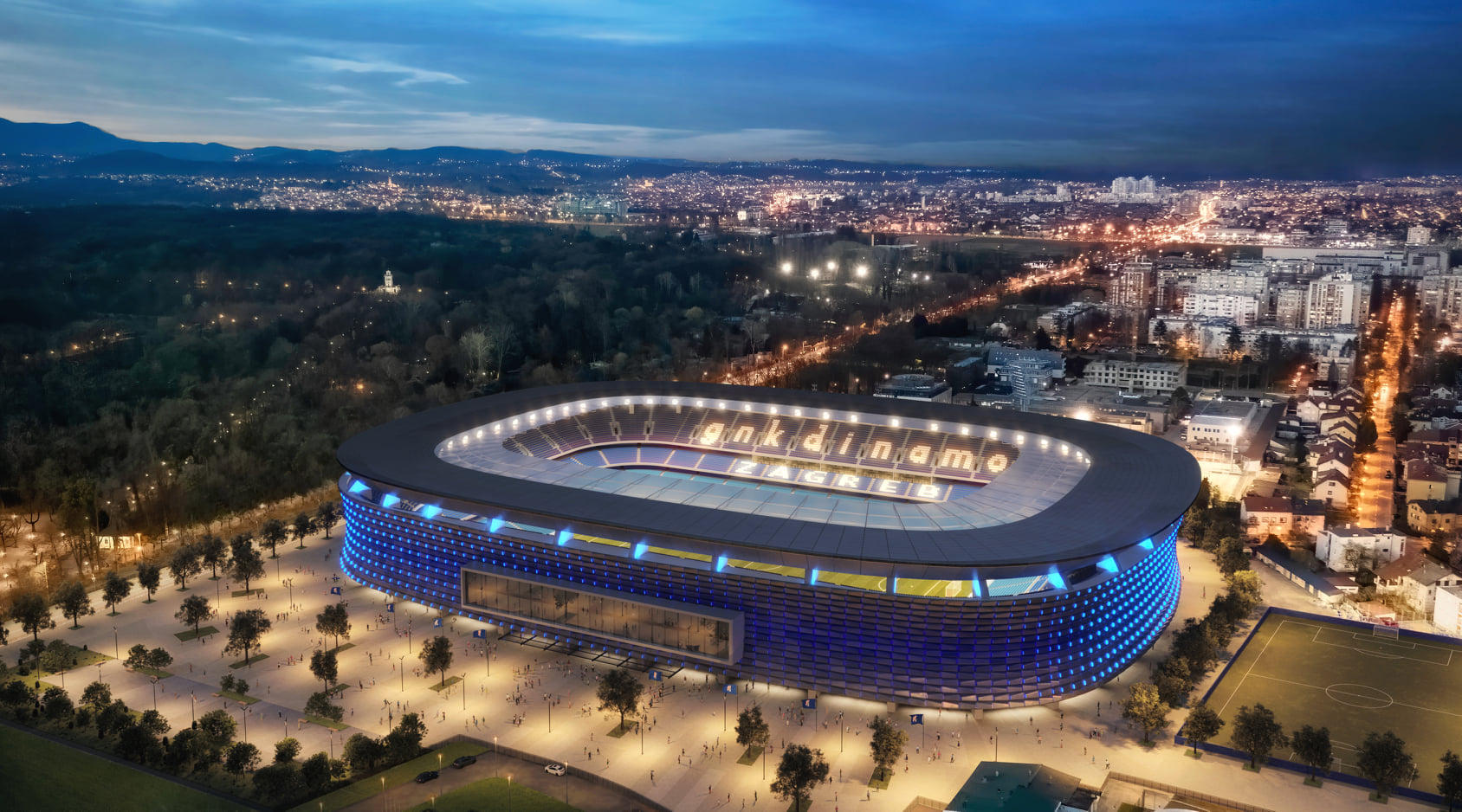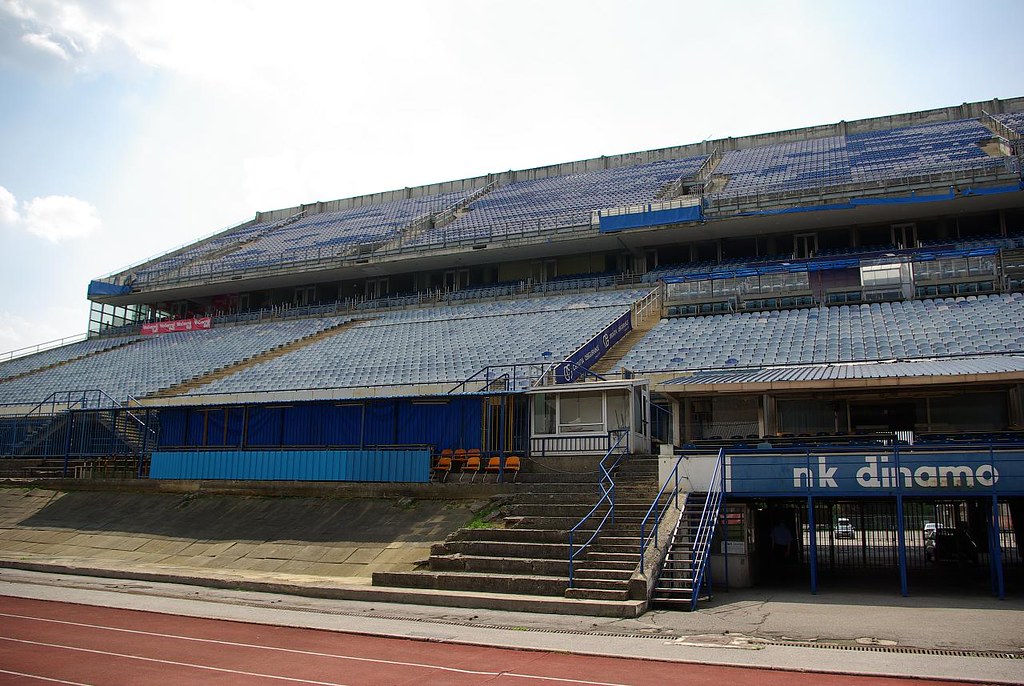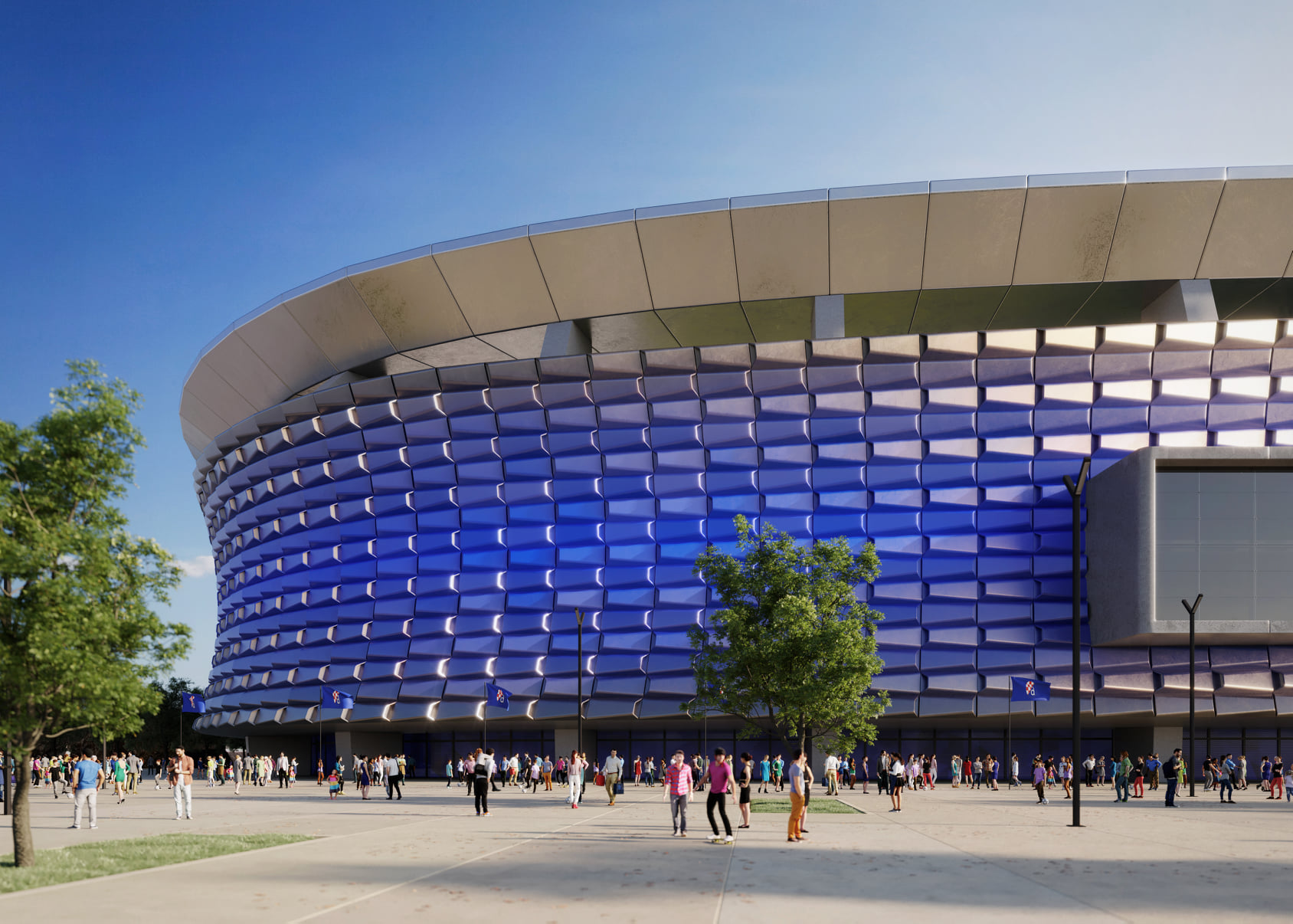
an aerial view of the soccer stadium in blue and yellow
Stadion Maksimir exterior. Dinamo Zagreb's home stadium is Stadion Maksimir. The stadium is situated in the northeastern part of Zagreb, opposite the city's largest urban park, Maksimir, which also lends its name to the eponymous neighbourhood. It was officially opened on 5 May 1912 and has been noticeably upgraded several times thereafter.

Stadion Maksimir, Zagreb, Dinamo Zagreb Flickr
Maksimir Stadium (Croatian: Stadion Maksimir, pronounced [ˈstâdioːn mǎksimiːr]) is a multi-use stadium in Zagreb, Croatia.Named after the surrounding neighbourhood of Maksimir, it is one of the largest stadiums in the country with a current seating capacity of 25,912 and a maximum possible capacity of 35,423. It is the home stadium of Croatian club Dinamo Zagreb and has been used since.

Maksimir stadium CityPal
Dinamo Academy. Dinamo's academy is one of the most successful academies in Europe, top results have been achieved for many years both domestically and on the European level. Many players which were produced by our academy have over time achieved top careers in the strongest leagues in Europe and became standard members of the Croatian national.

Future Dinamo Zagreb Stadium TFC Stadiums
The Maksimir Stadium was officially opened on May 5, 1912. At that time, Građanski trained and played at the Zagreb stadium, and Dinamo took over as the host in 1948. Over its more than hundred-year history, the stadium has undergone several renovations. In the fall of 1997, seats were installed on the eastern and southern stands.

Stadion Maksimir, Zagreb, Dinamo Zagreb Flickr
From May 2016 all interested visitors can take a walk around Maksimir stadium, find out interesting stories about Dinamo, fans, stadium's history and Zagreb city, as well as become a part of ''behind the scenes'' moments. You will be able to visit club's trophy rooms and see the famous trophy from 1967 - Inter-Cities Fairs Cup, today's UEFA.

Dinamo Zagreb Stadion Shop DINAMO
Maksimir. Stadion Maksimir službeno je otvoren 5. svibnja 1912. godine . Tada je na zagrebačkom stadionu trenirao i igrao Građanski, a Dinamo je nastavio u ulozi domaćina 1948. godine. Stadion je u svojih više od sto godina bio nekoliko puta preuređivan. U jesen 1997. na istočnu i južnu tribinu postavljene su sjedalice, prigodom "face.

Stadium Dinamo Zagreb
All info around the stadium of Dinamo Zagreb. Historical grounds can be chosen as well. News . Transfers & rumours . Market values. GNK Dinamo Zagreb . 24 1 4 7 16 . SuperSport HNL League level: First Tier.

Stadion Maksimir, Zagreb, Dinamo Zagreb a photo on Flickriver
The new stadium is expected to be used by the Dinamo Zagreb team while the reconstruction of the Maksimir Stadium in the centre of the Croatian capital is underway. "Kranjčevićeva has a capacity of 5,000 seats, and we will build one of the most modern stadiums in Europe that will accommodate 12,000 spectators, with four fully covered stands.

Stadion Maksimir, Zagreb, Dinamo Zagreb a photo on Flickriver
The Dinamo Zagreb-Red Star Belgrade riot was a football riot which took place on 13 May 1990 at Maksimir Stadium in Zagreb, SR Croatia, then part of SFR Yugoslavia, between the Bad Blue Boys (supporters of Dinamo Zagreb) and the Delije (supporters of Red Star Belgrade).The incident took place just weeks after Croatia's first multi-party elections in almost fifty years in which the parties.

Stadion Dinama Zagreb ImageFootball
Das Stadion Maksimir, kurz Maksimir, ist ein Fußballstadion in der kroatischen Hauptstadt Zagreb.Es ist das größte Stadion des Landes und Heimspielstätte des kroatischen Rekordmeisters Dinamo Zagreb.Die Spielstätte liegt im gleichnamigen Stadtviertel im Nordosten der Stadt, die Eigentümerin des Stadions ist. Auf der anderen Straßenseite liegt der Zoo Zagreb im Maksimir-Park.

Stadion Maksimir GNK Dinamo Zagreb YouTube
Expansion of temporary stadium for Dinamo. In a little less than a year, work should begin on the reconstruction of the stadium, whose capacity will be increased to 12,000 from the current 8,850. However, there are currently only 3,850 seats at the facility. The expanded Stadion NK Zagreb will be completely covered, in the English style, which.

Stadium Dinamo Zagreb
News Sport. December the 16th, 2023 - The green light has now officially been given for the demolition of the current football stadium, to make way for a brand new Dinamo stadium. As Poslovni Dnevnik writes, this week Zagreb Mayor Tomislav Tomašević called the agreement between the City of Zagreb and the powers that be within the government.

Dinamo Zagreb Novi Stadion Dinamo Zagreb kündigt Auszug aus Maksimir an Stadionwelt Ušli
Izvor: Wikipedija. [1] Stadion Maksimir je nogometni stadion u Zagrebu. Smješten je u istočnom dijelu grada, nasuprot parka Maksimira. Službeno je otvoren 5. svibnja 1912. godine. Preuređivan je nekoliko puta. Na stadionu utakmice igraju GNK Dinamo i Hrvatska nogometna reprezentacija . Povijest izgradnje[ | uredi kôd]

New design Dinamo reveals details of new Maksimir
Barić, in cooperation with the Polymachine studio, presented the first visualizations of the new Dinamo stadium. The club's authorities assume that the investment will cost € 60 million and the construction will be completed within 3 years. The city of Zagreb is to be the strategic partner of the project.

Dinamo Zagreb GNK Stadion Maksimir FICAZ TV Football Index
In its first decades, Stadion Maksimir was the home HAŠK Građanski, but got quickly expanded and turned into Zagreb's prime sports stadium. In 1948, Dinamo moved in. In the post-War years, Stadion Maksimir was a rather bare bowl-shaped stadium that consisted mainly of terraces. The stadium had a capacity of about 45,000.

New design Dinamo reveals details of new Maksimir
GNK Dinamo Stadium. Dinamo Zagreb's home stadium is Stadion Maksimir. The stadium can be found in the north-eastern portion of Zagreb, directly across the street from Maksimir Park, which is the largest urban park in the city and also gives its name to the neighboring neighborhood. It was presented to the public for the first time on May 5.